One of the most visible features of vehicles with high or low configuration is the
wheel hub assembly. Car owners are paying more for premium models. Is is necessarily better to be equipped with the wheel hub assembly of large size? It is not necessary.
Generally speaking, when a car is designed, in order to maintain the same passability, driving attitude, torque output of the wheel with the same displacement, although the wheel hub assembly size is different, but the vehicle tire outside diameter is the same. In other words, if the wheel hub assembly size increases, the corresponding tire wall size will decrease. For example, the new passat 18-inch wheels come with 235/45 tires, while the 16-inch wheels come with 215/60 tires. (PS: 45 and 60 represent the percentage of the thickness of the tire wall to the tread width of 235 and 215)
In fact, the advantage of high-fit models equipped with large-sized hub and small-sized sidewall tires is that it is more athletic, more precise - control, and of more direct direction feedback. The biggest disadvantage is the sacrifice of comfort. As in known, the combination of a small wheel hub assembly and a thick tire wall filters out bumps in the road better than the front combination.
Of course, this more accurate sense of control, is based on good road conditions. If the road is more complex, it is difficult for large wheel hub assembly to have advantage. For example, there may be large and small potholes in some asphalt pavement. If you're driving a car with the large wheel hub assembly and a small tire wall, you're more likely to suffer the situation of a flat tire and a broken hub when you drive at high speed. The lower version of the thick wall plus the small wheel hub assembly is more likely to survive. Therefore, as far as passability is concerned, high-allocation models with large-size wheels may not have an advantage.

 Wheel Bearing
Wheel Bearing is a set of steel balls or rollers held together by a metal ring called a race. They help wheels spin fast with as little friction as possible. View More
Wheel Bearing
Wheel Bearing is a set of steel balls or rollers held together by a metal ring called a race. They help wheels spin fast with as little friction as possible. View More Wheel Bearing Kits
When you need to change the wheel hub bearing,you also need to replace many other parts at the same time,such as hub nut,bolt,seals,split pin,and so on. View More
Wheel Bearing Kits
When you need to change the wheel hub bearing,you also need to replace many other parts at the same time,such as hub nut,bolt,seals,split pin,and so on. View More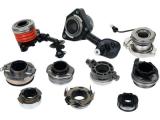 Clutch Release Bearing
Clutch Release Bearing is what presses down on the rotating spring plate or "pressure plate" to release the clutch disk. View More
Clutch Release Bearing
Clutch Release Bearing is what presses down on the rotating spring plate or "pressure plate" to release the clutch disk. View More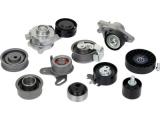 Belt Tensioner
A Drive Belt Tensioner is a pulley mounted to either a spring mechanism or to an adjustable pivot point that is used to keep constant tension on your serpentine belt. View More
Belt Tensioner
A Drive Belt Tensioner is a pulley mounted to either a spring mechanism or to an adjustable pivot point that is used to keep constant tension on your serpentine belt. View More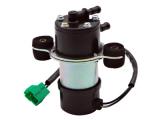 Fuel Pump
AiX provide you with the high quality of electric fuel pump and fuel pump assembly.Fuel pump assembly is one of the vital components of fuel injection system for EFI vehicle. View More
Fuel Pump
AiX provide you with the high quality of electric fuel pump and fuel pump assembly.Fuel pump assembly is one of the vital components of fuel injection system for EFI vehicle. View More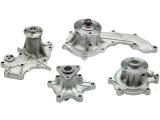 Water Pump
The reliable and effective operation of an automobile engine requires the cooperation of many parts. View More
Water Pump
The reliable and effective operation of an automobile engine requires the cooperation of many parts. View More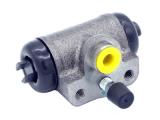 Wheel Brake Cylinder
When you want your car to slow down or stop, you need to take the brake operation. At this point, you need to step down your brake pedal. View More
Wheel Brake Cylinder
When you want your car to slow down or stop, you need to take the brake operation. At this point, you need to step down your brake pedal. View More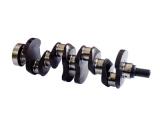 Crankshaft
Crankshaft is also known as crank.It is the important part of an engine to convert the up and down motion of the pistons into horizontal rotation.It is usually made by cast iron or forged steel. View More
Crankshaft
Crankshaft is also known as crank.It is the important part of an engine to convert the up and down motion of the pistons into horizontal rotation.It is usually made by cast iron or forged steel. View More VVT PHASER & OCV
VVT is the abbreviation of Variable Valve Timing. VVT PHASER is the vital component for the VVT engines. View More
VVT PHASER & OCV
VVT is the abbreviation of Variable Valve Timing. VVT PHASER is the vital component for the VVT engines. View More






 +86-18758057736
+86-18758057736 
 TEAM 21,XIEJIA VILLAGE, PUYANG TOWN, XIAOSHAN DISTRICT, Hangzhou, Zhejiang Province, China
TEAM 21,XIEJIA VILLAGE, PUYANG TOWN, XIAOSHAN DISTRICT, Hangzhou, Zhejiang Province, China 